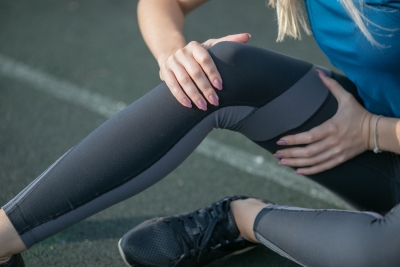
Anatomical and hormonal differences may be to blame, but there are ways to help reduce the risk.
More recent research has indicated what we orthopedic surgeons have often seen in our practice: women are 2 to 9 times more likely than men to have certain kinds of knee problems. Generally, knee injuries are very common, especially for anyone who plays sports, and they can affect any of the ligaments, tendons, cartilage, menisci, or bones surrounding the knee joint. The complexity of the knee joint and the fact that it is a weight-bearing joint add to its fragility and tendency for injury. Female athletes specifically hold an average of 3.5 times the risk of injuring their ACL, a strong elastic band that stabilizes the knee and one of the most formidable injuries in the sports world. ACL tears can have serious consequences and are often seen as “season-ending” injuries as full rehabilitation can take as long as 6-9 months and may result in the athlete being unable to play at the prior skill and intensity levels, which can be psychologically tough on the player. Alongside developing gold standards for treating these injuries, our focus is also aimed at preventing them before they happen. To do this, we have to understand WHY female knees are getting injured at higher rates than those of their male counterparts.
In studying what makes women more susceptible, researchers have surmised that anatomy, hormones, and technique may be to blame. For one, women have a proportionally wider pelvis than men, which causes their thigh bones to attach at more of an angle from the hip to the knee, as compared to men with a narrower pelvis that allows the thigh bones to attach more vertically. This slight angle of attachment, though minimal, can cause greater stress and instability of the knee. And then there’s estrogen, the female reproductive hormone that is responsible for many changes in the female body. Monthly fluctuations of estrogen have shown to influence knee injuries, and studies indicate that female athletes are more likely to sustain an ACL tear just before they ovulate when estrogen levels are rising. A University of Texas case-control study found that teenage girls from 15-19 on oral contraceptives (which lower and maintain estrogen levels) had fewer ACL reconstructions than non-users, leading to a further belief that estrogen does, in fact, play a role. In addition, testosterone, the male reproductive hormone, was suggested to contribute to the ACL’s ability to withstand greater loads, and can also help explain the different injury rates between males and females.
As far as technique goes, females generally have different neuromuscular control and tend to land on their feet differently than men when running or jumping. Seeing as most ACL injuries occur during landing from a jump, this can serve as one of the biggest risk factors. Simply put, females tend to land from jumps in a more erect position than men, keeping their legs straighter and requiring the knee to absorb a shock level it is not designed to hold. Landing with the knees too straight skyrockets the stress load of the knee and its surrounding soft tissues up to four times that of the athlete’s weight, and by simply bending the knees an appropriate amount, that stress can be reduced by 25%. Female athletes also characteristically develop stronger quadriceps muscles relative to their hamstrings, an imbalance of power that can strain the ACL. The causes of these habits could be genetic, a result of the training they are receiving, or a combination of both.
While females can’t change their anatomy or choose their hormones, the good news is that they CAN train to alter their body mechanics with specialized programs. The Prevent Injury and Enhance Performance Program (PEP) is a training program for athletes that have been able to effectively reduce the ACL injury rate and also improve dangerous neuromuscular movement patterns in female athletes. The program focuses on strengthening the hip and leg muscles, particularly the weaker hamstrings muscles, practicing proper jumping techniques, learning to land with knees more bent, as well as overall balance, agility, and plyometrics. Ideally, the PEP program should be started at the onset of puberty to prevent the maladaptive neuromuscular habits from developing in the first place, but can still be just as effective in later years. The PEP program is so effective in reducing the occurrence of ACL injury because the training is designed to target the specifics in female anatomy and body mechanics that directly lead to injury.
I encourage every female athlete to educate herself on best practices for body mechanics and most importantly, to dedicate the time to participate in a training program like PEP that can enhance and safeguard body movements while simultaneously enhancing sports performance, so that knee injuries won’t sideline you from the active lifestyle you love.
Sources:
https://www.webmd.com/pain-management/knee-pain/women-avoid-knee-injury
https://www.ncbi.nlm.nih.gov/pmc/articles/PMC3702781/
https://medicalxpress.com/news/2018-03-scientifically-proven-decrease-acl-injury.html
